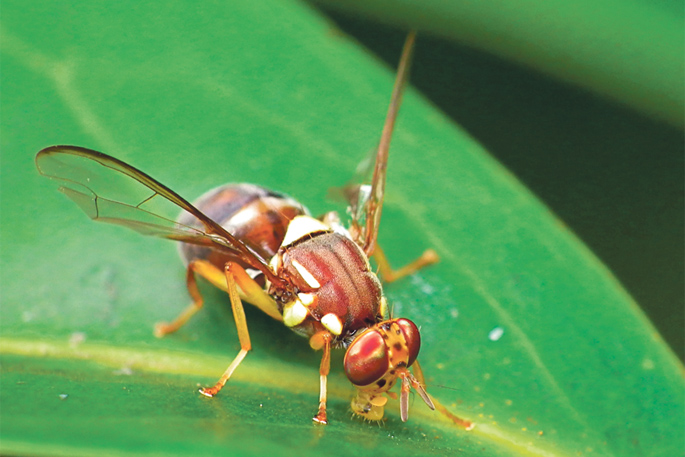Horticulturalists nationwide are watching on nervously as biosecurity teams work furiously to find out if more of either of two fruit fly species are present.
Two species of fruit fly were detected in different parts of Auckland in mid-February, sparking two mass biosecurity operations to determine if an incursion of either specie is evident.
As Coast & Country News went to print no evidence of a breeding population of either specie had been found and no incursions had been confirmed – but trapping in three suburbs was being beefed up.
Detections began with a single male Queensland Fruit Fly collected from a fruit fly trap on February 14 at Devonport. A second single male QFF was detected on February 20 at Northcote – again from a surveillance trap. Another QFF was found in a surveillance trap at Northcote on February 25 – it was 113m from the original detection there.
“This latest detection is further evidence that our surveillance programme is working and it is pleasing we still have no indication of an established breeding population,” says Biosecurity NZ spokesperson Dr Catherine Duthie
“Our trapping and surveillance has been enhanced and this programme will find any further flies in the area.”
Catherine says 140 Biosecurity NZ staff, contractors and industry partners are working on the response.
“In addition to the trapping, Biosecurity NZ staff are collecting fruit from backyards in Zone A at Northcote and checking this for larvae. More than 300kg of fruit has been inspected in our mobile laboratory with no detections to date.”
Catherine says QFF has been detected before in the upper North Island in the last decade. “Biosecurity NZ’s staff are well practised in dealing with this situation.
“If it established here, the QFF could seriously harm the country’s fruit and vegetable crops and affect exports of some produce. If a breeding population is found, work will progress to eradicate it.”
Meanwhile, Biosecurity NZ is also investigating the discovery of another type of fruit fly in Otara. On February 19 a single male Bactrocera facialis fruit fly – known as Facialis fruit fly – was found in a surveillance trap there. On February 22 a second FFF was found in a surveillance trap 70m from the first detection.

“We remain of the view that it is highly unlikely a breeding population of FFF would establish in NZ because of our climate. Facialis has never established anywhere in the world outside of Tonga,” says Catherine. “However, our enhanced surveillance programme in the area will continue as a precautionary measure.”
Overall, three QFF and two FFF have been found. A total of 548 traps are laid, 422 bins are place for locals to dispose of fruit and vegetables. So far 2757kg of fruit has been collected.



0 Comments
Leave a Comment